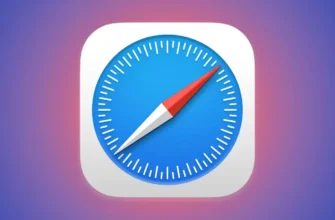Using a password manager or web browser to store all of your credentials is a convenient and secure way to manage access to your accounts. But you don't necessarily want to keep all your passwords in one place forever. Maybe the app you're using has a paid subscription or you just want to upgrade to something more advanced.
With that in mind, we've looked at some of the most popular password managers and web browsers to remember passwords to assess how easily each of them lets you export your logins and passwords in the format you need. Make sure the password management service you're switching to allows you to import passwords and what format they support.
It goes without saying that you should be very, very careful with your passwords: they should not be seen by others. Keep the exported file only as long as you need it, and make sure it won't be easily accessed.
1Password
To retrieve passwords from 1Password, you need to run the desktop app for Windows or macOS. In Windows, select the items to export with Ctrl + mouse click (or press Ctrl + A for everything), right-click them and select Export.
In the macOS version, select the storage you want to export, then select File, Export, and All Items.
On any platform, you can choose a CSV file or a plain text file as the export option to get data from 1Password.
Bitwarden
Passwords can be exported from Bitwarden via the web app, desktop apps, or Android and iOS apps.
In the desktop client, open the File menu and select Export Repository, then select the file format and click Submit.
In your browser, select Tools in the top navigation, then Export Repository.
Select a file format, then click Export Vault. You can choose CSV or JSON.
Dashlane

If you want to escape Dashlane, you can get a readable copy of your passwords from the Windows or macOS client.
Whichever one you use, open the File menu and select Export - in addition to the encrypted backup option (which is really only used with Dashlane itself), you'll see options for CSV and JSON formats (plus Excel on Windows).
Select one of them, select the location of the exported file, and your passwords will be sent.
FireFox
If you save your passwords in Firefox, you can retrieve them by opening the browser's desktop menu (the button in the upper right corner) and then selecting "Logins and passwords".
When the Firefox Lockwise screen appears, click the three buttons on the right side, then "Export Logins".
You will need to confirm the action, after which you will receive a CSV file that can be saved anywhere on the disk that you like.
Google Chrome

If you store your passwords in Chrome – which is understandable, since the browser makes it incredibly easy – you can retrieve them by opening the browser's desktop menu (three dots, top right) and clicking Settings, then Passwords.
Click the three dots next to Saved Passwords, then Export Passwords.
Click "Export passwords" to confirm the action, then select a disk location for the exported file to be saved in CSV format.
Keeper
To export passwords from Keeper, sign in to the web app using your main login, click the account link that appears in the top right corner, then select Settings and Export.
You'll see that there are three formats to choose from – PDF, CSV and JSON – and each has an associated "Export Now" button to save the file.
Check the box below to also save the passwords shared with you.
LastPass

If you want to opt out of this password service, you need to open the web client, select the "Advanced options" link in the lower left corner and select "Export".
LastPass then displays your passwords on a new CSV-style web page in a new browser tab.
From here, you must use copy and paste to transfer the data to another application (such as a spreadsheet application, word processor, or other password manager).
Microsoft Edge

Those of you who rely on Microsoft Edge to store your passwords should open the browser's menu via the three dots in the upper-right corner: select Settings from the list, then Profiles, then Passwords.
If you click the three dots next to Saved Passwords and Export Passwords, you can then click Export Passwords to confirm the action.
You will be provided with a CSV file that you can save anywhere on your computer.
North Pass
To retrieve your passwords from the NordPass Password Manager, you need to download and sign in to the desktop app provided for Windows or macOS.
Click the "Settings" button at the bottom left of the main interface, then select "Import and Export" from the tabs at the top: Click the "Export" button (bottom right) and you will be presented with a CSV file. which you can save anywhere on your system.
Safari
Apple doesn't particularly support switching to products other than its own, and that's probably one of the reasons you can't export passwords you've saved in Safari (and iCloud in general) anywhere else: you'd have to start over in another application.
If you select Settings and Passwords, you can right-click individual entries in the list to copy usernames and passwords. But all of them will have to be copied one at a time.



